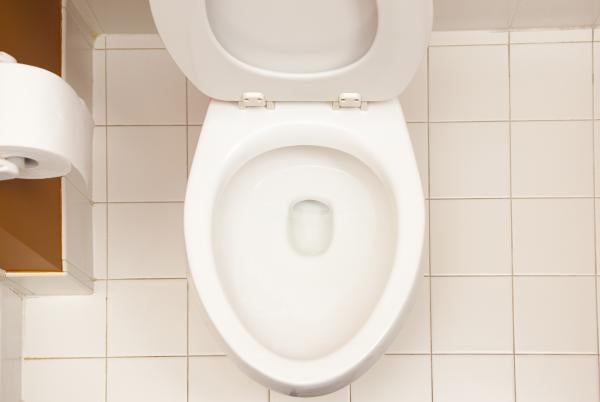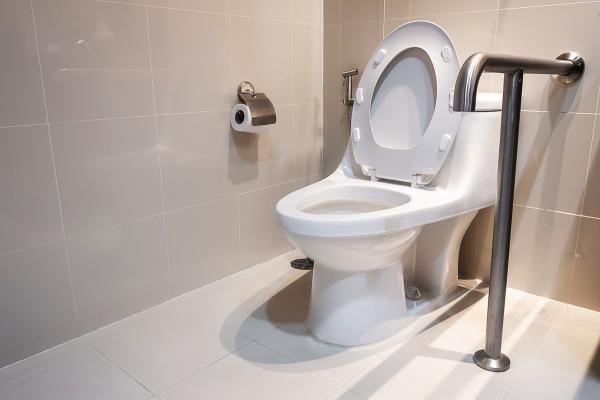CloroxPro Blog – Professional Cleaning and Disinfection Insights
A blog from industry experts devoted to public health awareness, best practices, and the role of environmental cleaning and disinfection, to promote safer, healthier public spaces.
The Toilet Bowl: Where C. Diff Can Persist https://www.cloroxpro.ca/blog/the-toilet-bowl-where-c-diff-can-persist/ April 29, 2019 August 19, 2020 https://www.cloroxpro.ca/wp-content/uploads/2020/07/ResizedImageWzYwMCw0MDJd-161365901-GTY-RF-Toilet-23-12-15-1038-small.jpgThe Toilet Bowl: Where C. Diff Can Persist
Given that C. difficile is found in feces, it makes sense to ensure that toilets and bathrooms are kept their cleanest as a preventative measure. But does your disinfectant of choice have a solution specifically for toilet bowls?
Surprisingly, many don’t. And that can be problematic.
In an informal poll, approximately 60 healthcare professionals told us about their disinfection practices.
Approximately 40% of respondents reported that they do not use a product with a drug identification number (DIN) to disinfect their facility’s toilets (or don’t know if the product they use has a DIN). This is despite the fact that the Provincial Infectious Diseases Advisory Committee (PIDAC) recommends that environments of patients with vomiting or diarrhea must be disinfected with a virucide against norovirus or sporicidal disinfectant for C. difficile.1

The risks are real
Here’s the reality: Clostridium difficile (or C. difficile) is one of the most common infections found in hospitals and long-term care facilities.2 In fact, C. diff has been a possible factor in hundreds of deaths in Ontario hospitals alone.3
These types of infections can very easily be transmitted within a hospital, especially when infection prevention and control measures aren’t followed.4
That can put patients, visitors and hospital staff in the very unfortunate position of being at risk for contracting C. diff. The Canadian Patient Safety Institute warns that this harmful bacterium can produce toxins that damage the lining of the intestines and lead to serious symptoms that range from diarrhea to death.5
There are even studies that expose the risks of the simple act of flushing a toilet contaminated with C. diff. One study points to lid-less toilets, which can release airborne droplets that contaminate the immediate environment when flushed.6 Another reported the persistence of C. diff in toilet bowls even after two dozen flushes.7
And perhaps most shockingly, a new strain of C. diff called NAP-1 – which is even more contagious than its predecessor – has emerged over the past decade and is spreading across North America and Europe. It produces up to 24 times more toxin, which could lead to more cases of diarrhea, more environmental contamination, and greater risk to potentially infect others.5
So how do we protect ourselves and others in healthcare settings against this pervasive bacterium?
Combating C. diff includes, amongst other measures, enhanced environmental cleaning with a Health Canada-registered disinfectant approved for use against C. difficile.8

C. diff surface disinfection
In addition to hand hygiene and containment protocols, cleaning and disinfecting are critical activities that can help prevent the transmission of C. diff spores between individuals and the surfaces they come into contact with.
Yet not just any product will work. C. diff spores are resistant to many common disinfectants, so a Health Canada-registered disinfectant with a C. difficile claim should be used.
Ensure that you read the disinfectant product label before use. It should state that the product kills C. difficile spores and should carry a Health Canada-issued DIN. And take great care following the instructions to ensure that the spores are effectively deactivated, as improper use can compromise your disinfection efforts.9
The Public Health Agency of Canada advises that the rooms of patients with C. diff (both suspected and confirmed cases) should be decontaminated and cleaned with a chlorine-containing cleaning agent (at least 1,000 parts per million) or other sporicidal agent.10
Health Canada reviews and approves disinfectants only when they establish bacterial spore claims against pathogens like C. difficile. Such products need to provide efficacy testing using the viable spore form (as testing using the vegetative cells of these bacteria is not considered to be sufficient).
Clorox Healthcare® Germicidal Disinfecting Cleaner is Health Canada-registered to kill C. diff and is conveniently available in a pull-top format – perfect for toilet bowls, shower stalls, and sinks (DIN: 02469278).
- Kills 59 pathogens
- Kills C. diff in just 3 minutes
- Kills bacteria, viruses, bloodborne pathogens, and TB in 60 seconds or less
- Pre-mixed, ready-to-use solution ideal for toilet bowls and sinks
- Stable
Try Clorox Healthcare® in your facility
Safeguarding your environment against C. diff to protect yourself and others isn’t something you have to take on alone.
Don’t hesitate to get in touch with us today to get samples for your facility or have a Clorox Healthcare® representative visit you. Together, we can build a customized solution based on your unique needs – for C. diff, everyday disinfecting, and much more.
References:
- Public Health Ontario.Provincial Infectious Diseases Advisory Committee. Best practices for environmental cleaning for prevention and control of infections in all health care settings, 3rd Edition. 2018. https://www.publichealthontario.ca/en/eRepository/Best_Practices_Environmental_Cleaning.pdf. Accessed February 6, 2019.
- Government of Canada. C. difficile (Clostridium difficile).https://www.canada.ca/en/public-health/services/diseases/c-difficile.html. Accessed January 21, 2019.
- The Globe and Mail. Powell N, Walters J. https://www.theglobeandmail.com/news/national/c-difficile-possible-factor-in-463-ontario-hospital-deaths/article1056968/. Accessed March 27, 2019.
- Government of Canada. Public Health Agency of Canada. Fact Sheet – Clostridium difficile (C. difficile). https://www.canada.ca/en/public-health/services/infectious-diseases/fact-sheet-clostridium-difficile-difficile.html. Accessed January 21, 2019.
- Canadian Patient Safety Institute. Clostridium difficile. https://www.patientsafetyinstitute.ca/en/Topic/Pages/Clostridium-difficile.aspx. Accessed January 21, 2019.
- Best EL, et al. Potential for aerosolization of Clostridium difficile after flushing toilets: the role of toilet lids in reducing environmental contamination risk. J Hosp Infect 2012:80;1-5.
- Aithinne KA, et al. Toilet plume aerosol generation rate and environmental contamination following bowl water inoculation with Clostridium difficile spores. Am J Infect Control 2018; https://doi.org/10.1016/j.ajic.2018.11.009.
- Ontario Ministry of Labour. C. difficile. https://www.labour.gov.on.ca/english/hs/pubs/ib_c-difficile.php. Accessed February 4, 2019.
- Alfa MJ, et al. UV-visible marker confirms that environmental persistence of Clostridium difficile spores in toilets of patients with C. difficile-associated diarrhea is associated with lack of compliance with cleaning protocol. BMC Infect Dis 2008:8:64.
- Government of Canada. Public Health Agency of Canada. Clostridium difficile infection: Infection prevention and control guidance for management in acute care settings. https://www.canada.ca/en/public-health/services/infectious-diseases/nosocomial-occupational-infections/clostridium-difficile-infection-prevention-control-guidance-management-acute-care-settings.html#a13. Accessed January 21, 2019.
